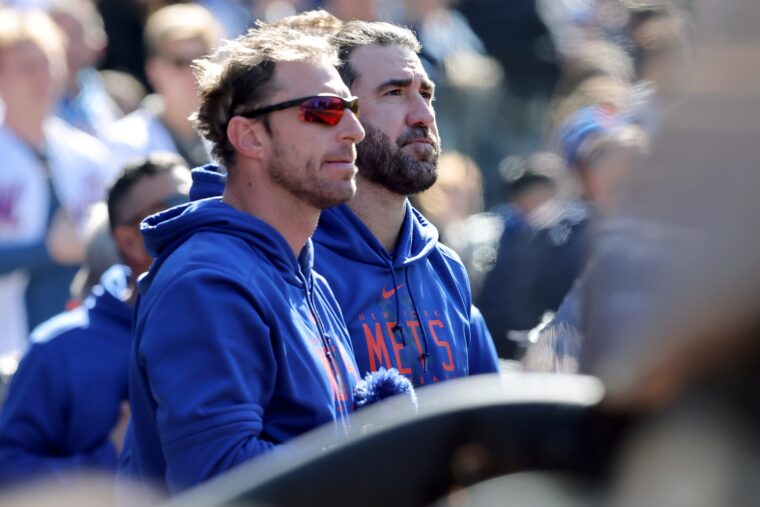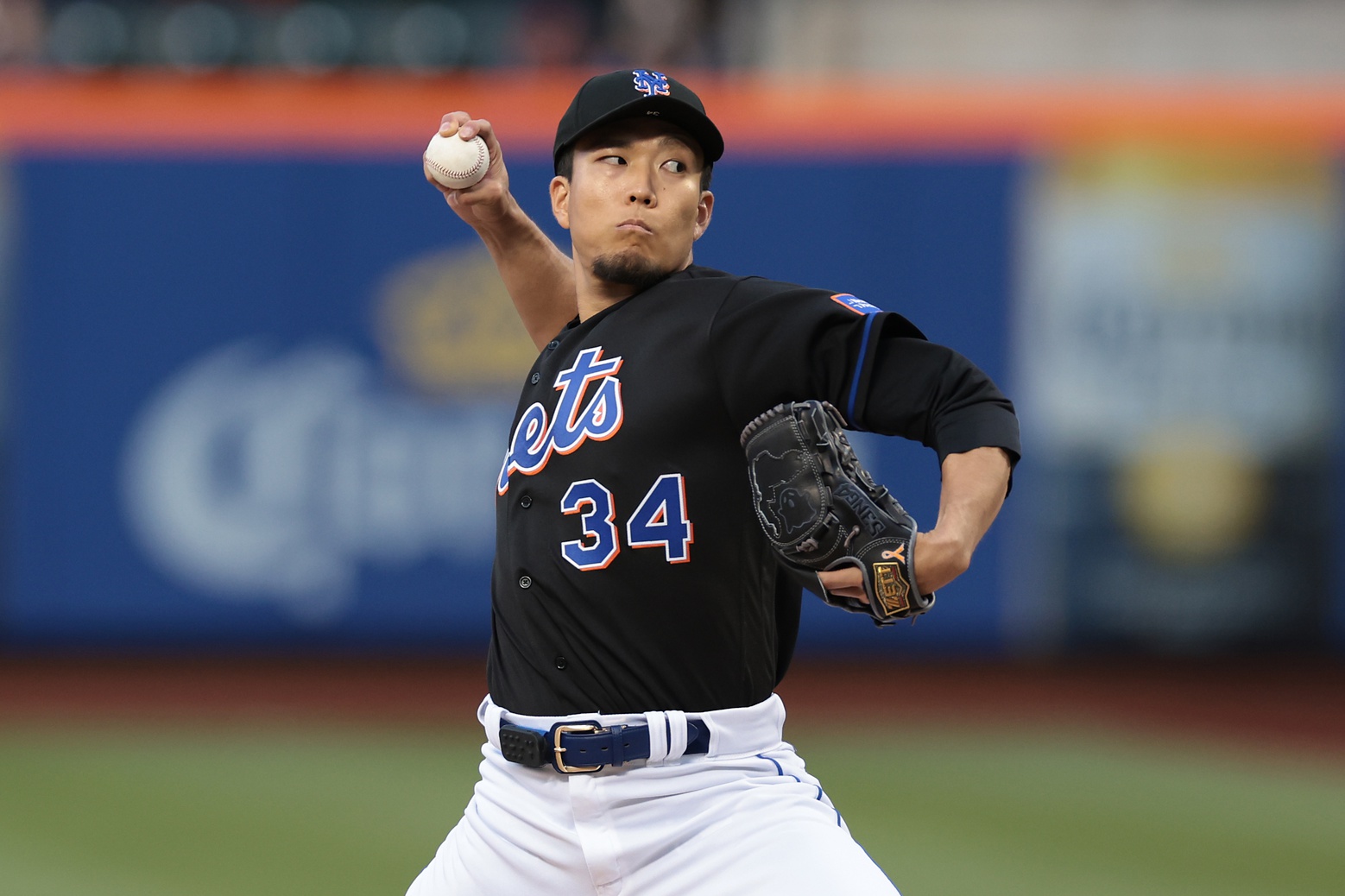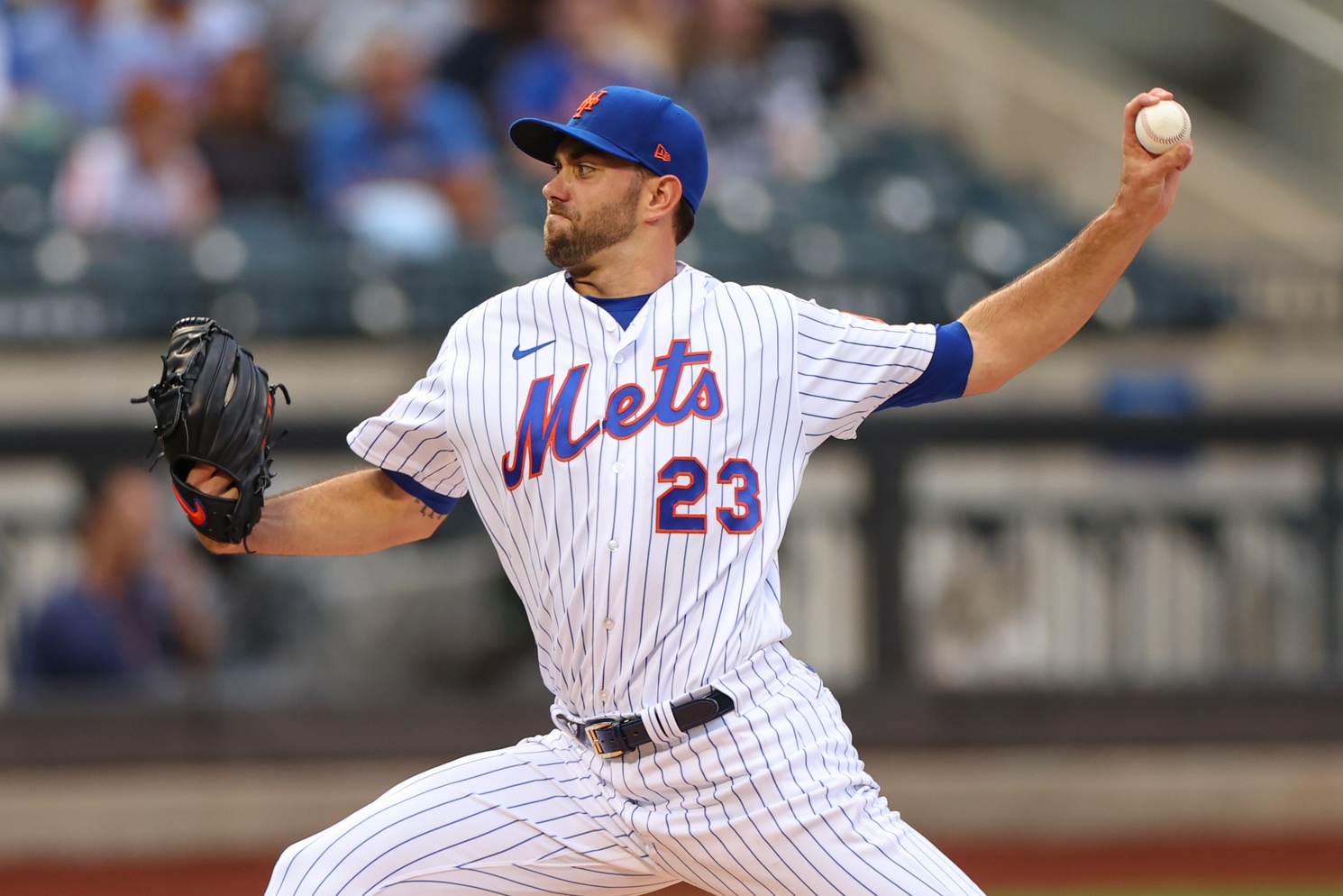At the start of the season, the Mets’ starting pitching was expected to be the team’s strong point. Although they had to cope with the departure of Jacob deGrom, they managed to fill the gap by signing the AL Cy Young winner and World Series champion Justin Verlander. The losses of Chris Bassitt and Taijuan Walker were balanced out by the additions of Kodai Senga and Jose Quintana.

Brad Penner-USA TODAY Sports
The team’s rotation was further bolstered by the inclusion of Carlos Carrasco (whose option was picked up for 2023), David Peterson, Tylor Megill, and Joey Lucchesi. It was clear that the team heavily relied on this talented pitching staff to lead the way throughout the season.
However, things didn’t go as planned. Injuries to Quintana, Verlander, and Scherzer weakened the rotation’s depth, and lackluster performances from Carrasco, Peterson, Megill (alongside Denyi Reyes and Jose Butto) hindered a struggling team that was trying to find its rhythm. Overall, in the 90 games started by the rotation so far, they have a record of 30 wins, 28 losses, and 32 no-decisions.
Recently, the rotation has found some stability and despite a few setbacks, they seem to be improving as the second half of the season unfolds. Now, let’s delve into the performance of each starting pitcher.
Max Scherzer: D
Despite his impressive 8-2 win-loss record, Scherzer has faced numerous obstacles that have hindered his performance this season. Injuries to his neck and shoulder, along with a 10-game suspension for a failed “sticky” substance check, have resulted in two different versions of Max on the field. With a 4.31 ERA, his highest since 2011, we have witnessed one version of Scherzer struggling. He has surrendered home runs in 11 out of his 16 starts, completed the sixth inning only three times, and has allowed five or more runs in five games this season.
The combination of Scherzer’s age and the wear and tear on his arm is starting to manifest, as he has been impacted by external factors as well as self-induced adjustments to certain pitches that resulted in a string of poor starts. However, there have also been glimpses of his former self during this period.
On June 19th, in Houston, Scherzer displayed his formidable slider and breaking pitches, going eight innings and striking out eight Astros while allowing only four hits. Similarly, on May 26th against Colorado, he excelled over eight innings, striking out eight batters on just six hits. In a total of eleven starts, Scherzer has struck out six or more batters, accumulating 101 strikeouts in the first half of the season.
Although Scherzer has shown flashes of brilliance, he must elevate his performance in the second half. To sustain their positive trajectory, the Mets rely on Scherzer to be a pillar of their rotation and consistently pitch well. This is not a pitcher in the early stages of finding his rhythm; rather, he is a future Hall of Famer who was acquired to be a top-tier starting pitcher for the team.
Justin Verlander: C-
Following Jacob deGrom‘s departure, the Mets signed Justin Verlander in the offseason, envisioning him as the second half of a formidable starting pitching duo that boasted experience and superstar talent. Unfortunately, Verlander’s season did not begin as anticipated. He encountered the injury bug himself, suffering a teres muscle strain that sidelined him until early May. In his 12 starts thus far, Verlander holds a 3-4 win-loss record with a 3.60 ERA across 70 innings pitched.
Consistency proved to be a major challenge for Verlander. His first five starts alternated between losses and wins, each outing presenting a stark contrast to the previous one. He began with a 2-0 loss against Detroit, followed by a 2-1 victory over Cincinnati. However, he struggled in his subsequent start, surrendering six runs to the Tampa Bay Rays. Nevertheless, he rebounded with a solid eight-inning, five-strikeout performance against the Guardians on Sunday Night Baseball.
Thus far, Verlander has only amassed 57 strikeouts this season, achieving six or more strikeouts in a game on just four occasions. Furthermore, his innings pitched vary significantly from start to start, and he has completed six innings or more only six times. Additionally, he has not won consecutive starts this season. Similar to Scherzer, Verlander faces concerns associated with his age and the extensive wear and tear on his arm as he approaches his late 30s and early 40s. The team relies on him to serve as a cornerstone of their win-now starting rotation. While he still possesses the pedigree and demonstrates some remaining potential, his performance has been lackluster thus far. To make a significant impact in the National League, the team will require more from him moving forward.

Vincent Carchietta-USA TODAY Sports
Kodai Senga: B+
In a significant offseason move, the Mets signed Kodai Senga, a talented pitcher from Japan, through a substantial five-year contract worth $75 million. Brought in as a replacement for Chris Bassitt and Taijuan Walker, Senga has made a positive impression, despite encountering a few challenges along the way. In his debut season, he has demonstrated his abilities, amassing a commendable 7-5 record, a 3.31 ERA, and an impressive total of 113 strikeouts over 89.2 innings.
Utilizing his deceptive “ghost” forkball, Senga has showcased his dominance by striking out eight or more batters on six occasions this season. Notably, he displayed his prowess with outstanding performances against the Arizona Diamondbacks and the Tampa Bay Rays, striking out 12 batters in each game. Even in his less stellar outings, Senga has limited the opposition to a maximum of five runs, and he has managed to pitch into the sixth inning or beyond on seven occasions.
As the first half of the season concludes, Senga has undoubtedly established himself as a formidable presence on the field. He currently leads the league with an opposing batting average of an impressive .204. Moreover, he ranks second in hits allowed per nine innings, third in strikeouts per nine innings, eighth in total strikeouts, and tenth in ERA. These statistics have earned Senga a well-deserved spot on the National League All-Star team, replacing Marcus Stroman.
Having surpassed early doubts, Senga has proven to be the Mets’ standout starter thus far, and the team looks to him to maintain this level of performance during the second half of the season and, potentially, a playoff run.
Carlos Carrasco: C-
Picking up his option for 2023, the Mets hoped Carlos Carrasco would pick up the pace from his stellar bounce-back season in 2022. Unfortunately, two of his first three starts this season did not go as well as planned and ended up on the injured list soon after. Before being placed on the injured list, his performance during that period was challenging, as he lasted 13⅔ innings but struggled with an elevated ERA of 8.52. Unfortunately, Carrasco’s struggles were reflective of the overall team performance, as the Mets found themselves ranked 24th in the league for team ERA and 25th for starter ERA during that period.
After a tough start in May, Carrasco seems to have figured out a groove, only giving up five runs in a game once and keeping his totals down to below three. His last two starts before the break were his best, going five innings and only giving up two runs on six strikeouts against the San Francisco Giants and going eight innings, striking out four and giving up no runs against the first-place Arizona Diamondbacks.
He seemingly has used a new slider grip as of late, which has contributed to his recent successes. Before his start against the Giants, Carrasco decided to experiment with a new slider grip after being inspired by an Instagram video featuring pitcher Pablo Lopez. The results were promising. Carrasco relied on his slider, throwing it 28 times out of his total 92 pitches versus San Francisco.
Relying less on his slider against Arizona, Carrasco made use of his other breaking pitches, to much success as well. Carrasco’s curveball proved to be highly effective. He utilized the curveball 12 times, resulting in one whiff on five swings and four called strikes. A shaky start to his campaign has seemingly turned into something positive and can only hope he can continue to anchor the back end of the rotation for the rest of the season.

Vincent Carchietta-USA TODAY Sports
David Peterson: D+
The David Peterson experiment seems like a mountain, with a lot of highs and lows. Seen as an anchor for the back end of the rotation and coming off a strong 2022, Peterson did not inspire confidence with his lackluster performances out of the gate and was one of the bigger culprits in the Mets rotation crippling the team early on. Giving up four or more runs in almost every start up until before his start on June 27, the team decided to send him down to Triple-A Syracuse to figure out his issues on the mound. His ERA inflated to a gaudy 8.08 and the team only won one of his eight appearances.
One of the biggest issues with Peterson this season was his lack of command of his secondary pitches. Peterson’s slider was considered not only his most effective pitch but also one of the most formidable out pitches in baseball in 2022. When facing right-handed hitters, he would toss it on the inside edge of the zone for strikes or forced hitters to chase after it, resulting in swings-and-misses, particularly with two strikes.
However, this season, Peterson has struggled to command that same pitch. He frequently missed the mark, leaving it too high or yanking it down into the dirt. Additionally, he has thrown more sliders that fail to challenge hitters. This unfavorable combination has contributed to his struggles this season. This also caused him to either throw it in a spot where the hitter won’t chase or right down the middle, causing chaos for Peterson on the mound.
Peterson would get a second crack after the demotion of another struggling pitcher and since June 27th, has made the most of his opportunity. In his last three starts since, he has pitched a total of 15 1/3 innings and given up four earned runs. The team has fared well in those games, winning two out of three.
Tylor Megill: D
Tylor Megill has been one of the more disappointing performers this season, struggling to find his form on the mound despite a 6-4 win-loss record. With an elevated ERA of 5.17, he has been unable to establish consistency and replicate the reliability he showcased last season, notably when he stepped in on Opening Day to fill in for an injured deGrom.
While Megill had a solid performance in April, his effectiveness declined throughout May. June has been a rollercoaster month for him, featuring two strong outings and two subpar performances. Control has been a particular issue, evident in the 12 walks he issued in just 17 ¹/₃ innings. His recent start in Houston, where he surrendered five runs and four walks, further highlighted his struggles. Despite the Mets’ offense scoring eight runs, neither Megill nor the bullpen could secure a victory.
Pitching coach Jeremy Hefner offered his perspective before Megill’s demotion, suggesting that the pitcher may have become overly preoccupied with his mechanics. Hefner emphasized the importance of returning to Megill’s natural pitching style and focusing on simply throwing the ball. Additionally, Megill’s fastball has encountered a significant problem, losing effectiveness in the upper part of the strike zone. While his fastball previously exhibited strong upward movement, reaching velocities of 98-99mph, it is now descending at a faster rate than the league-average fastball, resulting in reduced effectiveness and decreased velocity.














